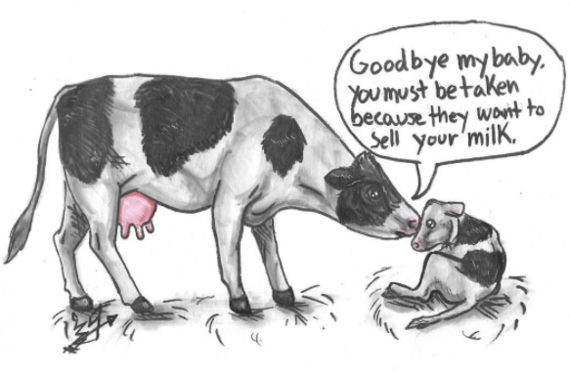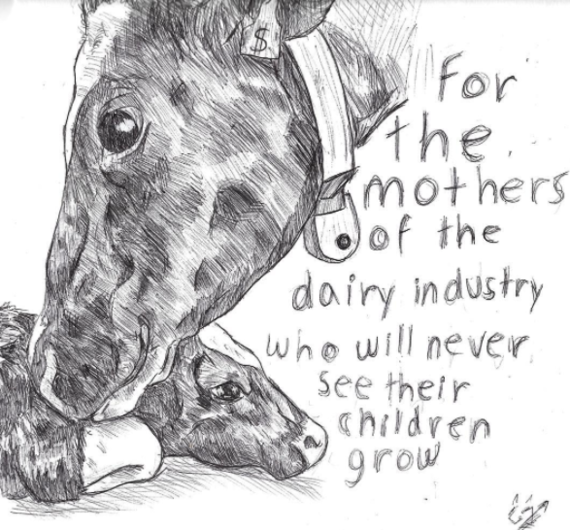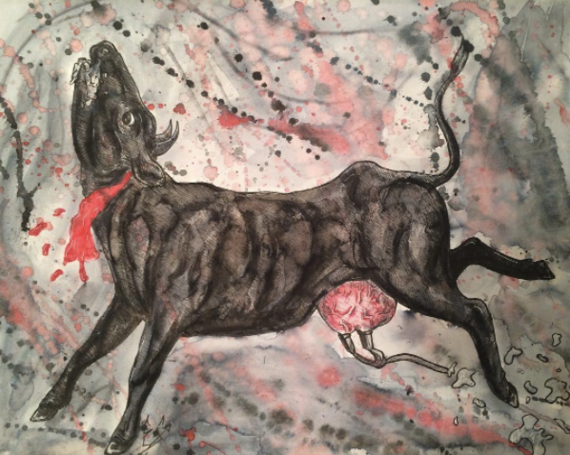The dairy industry seems to be panicking. Last year, the Dairy Reporter published a plea to introduce a nationwide 'Dairy 3-a-day' program, Jamie Oliver featured Free Range Dairy on Friday Night Feast, and then the BBC tugged at our heartstrings with Gareth Wyn-Jones - Milk Man outlining the crisis facing Welsh dairy farmers.
So, with more people than ever turning to non-dairy alternatives in the UK, are there any reasons to consume dairy?
Milk is healthy
I grew up believing that milk was the only source of calcium but I have since discovered that to be untrue. Milk may be one source of calcium, but so are non-dairy alternatives and a huge range of vegetables and pulses like leafy greens, kidney beans and nuts.
Surprisingly, even the NHS Eat Well Plate, the government's nutritional guideline for people over 2 years old, no longer advocates dairy over non-dairy alternatives. The WHO and the UN both recommend predominantly plant-based diets and a study published by Harvard in October 2016 found that replacing animal proteins with plant-based sources increases life expectancy.
The only living creature that relies on cows' milk to survive is a baby cow.

Cows need to be milked
Knowing that for cows to produce milk they must have given birth, yet not seeing a single calf on the Free Range Dairy feature on Jamie and Jimmy's Friday Night Feast, I felt compelled to email with some questions.
While I was not given permission to publish the responses I received I am aware - from a number of first- and second-hand sources - that calves of dairy cows usually stay with their mothers for a mere 24 hours. They are allowed to drink the highly nutritious colostrum produced in this time but only because it is unfit for human consumption. While some farmers will allow calves to suckle after daily milking, leaving a calf with his or her mother with no parameters means they drink the milk produced biologically for them but commercially for humans: the farmers do not make any money.
Therefore cows, in the absence of calves, do need to be milked: they then produce milk in response to the demands of their mechanic "calf" while their actual calves are, ironically, fed milk replacements.
Additionally, modern dairy cows have been systematically bred to produce up to 12 times the amount of milk they would naturally produce: a bonus for the farmers, of course, but resulting in many issues for the cows themselves.
Consuming dairy products doesn't kill cows
So what happens to the calves that are borne to dairy cows? And what about the dairy cows themselves?
After de-budding, tail-docking and castration (all of which can be done without anaesthetic if under a week old), male calves are often sold for veal and females are either sold on for beef or put back into the cycle of impregnation, birthing and milk production.
As for the dairy cows themselves?
Dairy cows are generally considered unproductive at around 8 years old yet the natural lifespan of a healthy cow is between 20 and 25 years. The constant impregnation and birthing takes its toll with cows commonly unnaturally re-impregnated while still being milked adding even more stress. 150,000 cows are still pregnant when sent to the slaughterhouse to be made into low-grade beef.
So yes, consuming dairy doesn't directly kill the cows, but it does mean they lead a life of constant birthing and forced re-impregnation without being allowed to follow their natural mothering instincts or live out their natural life span. And then it kills them.

To support the dairy industry
It's hard not to be moved by Jamie Oliver and Gareth Wyn-Jones' heart wrenching footage of dairy farmers facing the collapse of businesses that they had hoped to pass on to "Little Harry."
However, it's even more difficult to continue to knowingly support an industry that is built on the exploitation of the female reproductive systems of sentient beings. In a genuine quest to know more, I personally emailed over 20 dairy businesses and received little or no concrete information about their common practices.
So I did some research and found myself sitting, highlighter in hand, staring at 55 pages of legislation with multiple browser windows in front of me, growing increasingly frustrated that what I was reading was, firstly, hugely open to individual's interpretation and, simultaneously, so full of inaccessible language that I needed explanatory notes to understand it.
As for the little Red Tractor I was also pointed toward? It turns out it's really no more stringent than the animal welfare laws themselves.
In conclusion
The media shows one side of dairy farms - the friendly, concerned local milk producer - but conversely Viva, known for their undercover exposés on UK farms describe the abhorrent practices in the Dark Side of Dairy a document I truly believe everyone should be aware of.
What if - as seemed to be suggested by Jamie Oliver - everyone who consumes dairy products continued to do so at the current rate but chose "free-range" products? Firstly, these products would be much more expensive. Additionally, there simply wouldn't be enough land to cope with the demand. Choosing these so-called ethical products is therefore a privilege not everyone has.
Personally, I am not willing to support an industry - free-range or not - that is not transparent in its practices, especially when live animals are affected. Are you?

All photos are original works by CJ, also known on Instagram as @cynical_coyote, and used with permission of the artist.